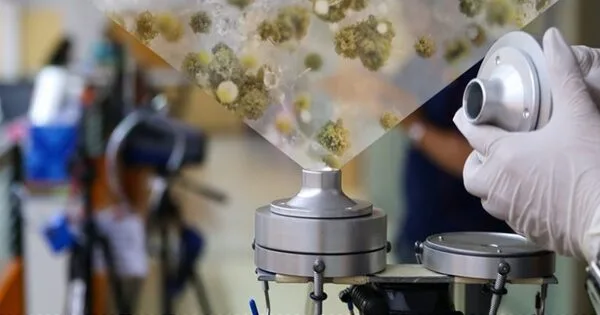Indoor bioaerosols are minute biological particles suspended in air in indoor spaces. It’s bioaerosol in an indoor setting. Bioaerosols are biological particles suspended in the air, either naturally or artificially. These particles are sometimes referred to as biological dust. Bacteria, viruses, fungus, pollen, and other organic elements can all be part of these particles.
Bacteria, fungi (including spores and cell fragments), viruses, microbial toxins, pollen, plant fibers, and so on can all be found in bioaerosols. Bioaerosols can come from a variety of sources, and their presence in indoor air can have an impact on human health, indoor air quality, and infectious disease transmission.
Bioaerosol particles range in size from less than 1 µm to 100 µm in aerodynamic diameter. They can be suspended in air as single cells or microbe clusters as small as 1-10 µm. Concerns concerning indoor bioaerosols have grown over the last decade since they have the potential to cause a variety of human health impacts, and the indoor environment provides a unique exposure scenario.
Common sources of indoor bioaerosols include:
- Humans: People release bioaerosols through activities such as breathing, talking, coughing, and sneezing. Respiratory droplets and particles containing microorganisms can become aerosolized and remain suspended in the air.
- Pets: Animal dander, hair, and other particles shed by pets can contribute to indoor bioaerosols.
- Plants: Mold spores and other particles can be released by indoor plants, especially in conditions of high humidity.
- Mold and Fungi: Damp or moldy areas within buildings can release mold spores and fungal fragments into the air. Poor ventilation and high humidity levels can contribute to mold growth.
- Insects: Insect droppings and body parts can also become airborne and contribute to indoor bioaerosols.
The health effects of exposure to indoor bioaerosols depend on the types and concentrations of microorganisms present, as well as individual susceptibility. Common health concerns include respiratory irritation, allergies, and the transmission of infectious diseases.
Controlling indoor bioaerosols involves various strategies:
- Ventilation: Proper ventilation helps reduce the concentration of bioaerosols by bringing in fresh outdoor air and diluting indoor pollutants.
- Humidity Control: Maintaining indoor humidity levels within the recommended range (usually between 30-50%) helps prevent the growth of mold and fungi.
- Filtration: High-efficiency air filters can capture particles, including bioaerosols, and improve indoor air quality. Regular filter replacement is essential.
- Cleaning: Regular cleaning of surfaces, carpets, and bedding helps reduce the accumulation of bioaerosol sources such as dust mites, pet dander, and particles.
- Personal Hygiene: Practicing good personal hygiene, such as handwashing, covering coughs and sneezes, and staying home when sick, can help reduce the introduction of bioaerosols into indoor spaces.
Understanding and addressing indoor bioaerosols is crucial for maintaining a healthy indoor environment, particularly in settings where people spend extended periods, such as homes, offices, schools, and healthcare facilities.
















